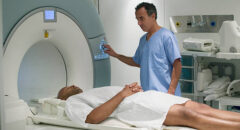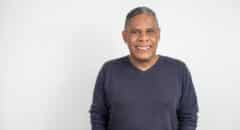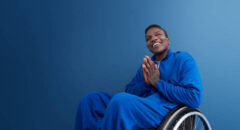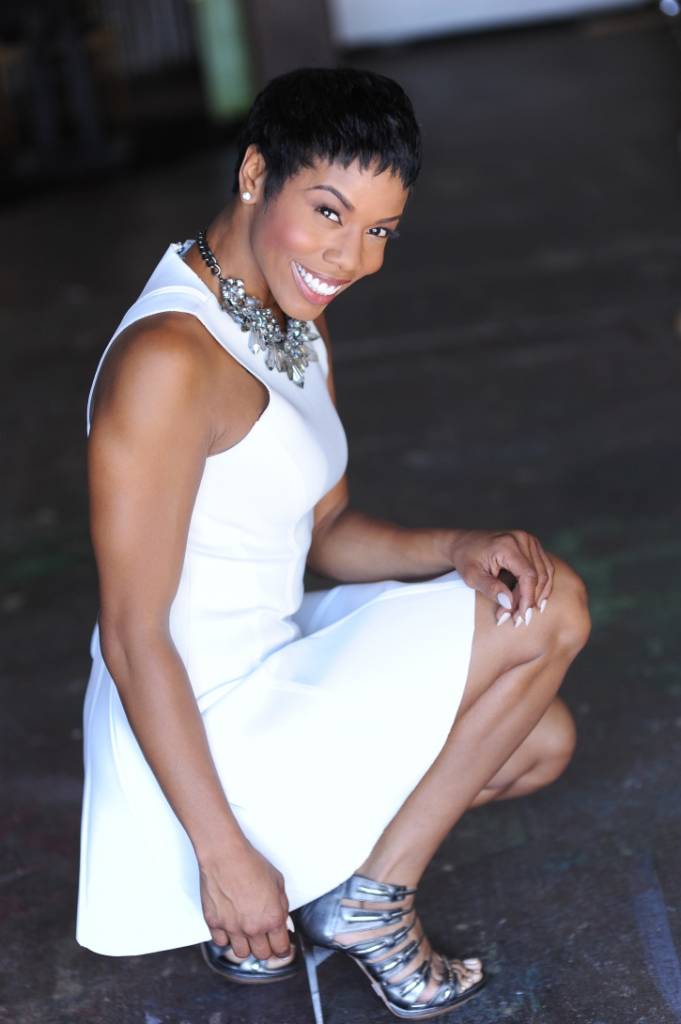
As a professional dancer and choreographer, Brandee Evans has worked with notables like Alicia Keys, Mary J. Blige, Ledisi, Kelly Rowland, Snoop Dogg, and Katy Perry to name a few. Brandee dances like nobody’s business and she does it all while rocking a fierce pair of six-inch pumps! What’s even more impressive is the former assistant director to the NBA’s Memphis Grizzlies dance team shows women around the world (from London to Japan) how to drop it like it’s hot in heels while finding their inner sex goddess with her series of dance classes, “Hip Hop in Heels.” And it’s all for an amazing cause.
A portion of the proceeds go toward Brandee’s mother, Diana Harrington, who’s currently staying in a rehabilitation center for multiple sclerosis because her recent injuries make it unsafe for her stay home alone. Diagnosed back in 2003, Harrington, who used to walk four miles a day, has become immobile from the waist down as a result of the disease.
To make matters worse, the “Hip Hop in Heels” classes are no longer enough to pay for Harrington’s medical expenses since the rehab center where she stays costs $6,000 a month. Despite these obstacles, Brandee and her mother refuse to back down in their fight against MS.
BlackDoctor.org recently spoke with Brandee Evans to discuss “Hip Hop in Heels” and the challenges of MS.
BDO: How did the concept of “Hip Hop in Heels” come about?
BE: “Hip Hop in Heels” started as a way to raise money for my friend’s dance studio. A lot of the little girls couldn’t afford to take dance and I was like, “Oh, well, let me bring something back to the city that we do in L.A. and auditions.” With auditions, dancers often get the memo last minute that we have to dance in heels. I never had to do that until I got to L.A. so I thought maybe I should do something showing everyone back home what actually happens when you get to L.A. so that’s how it started.
BDO: Tell me more about “Hip Hop in Heels” and its mission?
BE: “Hip Hop in Heels” is for the woman who wants to do something fun, work on her confidence and feel sexy. It’s not for the professional dancer – professional dancers are definitely welcome and it’s just something that will give them an opportunity to work on their performance and all of that. But this is really something that’s for the every-day woman because a lot of women don’t like hitting the gym so this is a way for women to get into shape while having fun at the same time. People don’t realize how much cardio dance is – there’s so much cardio involved in dancing.
BDO: How did your passion for dance come about? Is it something you did since you were a little girl?
BE: Well, I always wanted to dance. My mom told me I could never do anything with dance so when I was in the performing arts program at my middle school and high school, she didn’t let me dance. I was actually in the creative writing department because she was like, “You’re never gonna do anything with this dance.” I was able to join the dance team around ninth grade and that’s when I just knew that I was in love with it. I joined the All-star team around 11th grade and Frankie – my mentor at the time – he took me to L.A. and we started doing the big dance casts and that’s when I knew I was in love with L.A. and that I was in love with dance.
RELATED: See How These Women Win Against MS
BDO: Tell us about your connection to multiple sclerosis?
BE: My mom has multiple sclerosis. My classes went from being a fun way to raise money for little girls who couldn’t afford to take dance and then it became an absolute have-to because I had to figure out how I could make more money to help with my mom’s medical bills. And so, I’ve just been travelling and teach “Hip Hop in Heels” classes to help with the medical bills as much as I can, but it’s still not enough. It’s also been a way to spread awareness for multiple sclerosis. Actually, in Atlanta, I had a MS patient that came and said, “I started coming because I found out you were doing classes for MS for your mom and I actually have MS.” She made it through the class and she left feeling confident and a lot of times that’s hard – she didn’t want to hit the gym because she knew she couldn’t just make it through a kickboxing class, but with dance, it’s just fun and if she felt like needed a moment to take a break, she could take a break. It was one hour where she didn’t have to think, “I have this horrible disease.”
BDO: How has the response been so far?
BE: The welcoming of everyone has been amazing. Everyone’s been so helpful. I’ve had choreographers who’ve reached out to donate their time and their talent – it’s just been amazing. So, now I’m actually trying to think of what I can do next because there are only so many dance classes you can do so that’s where I’m at now – what I can do differently to help the situation out with my mom.
BDO: What’s been the most rewarding aspect during this entire journey so far?
BE: Seeing my mom smile. I’ve been able to bring my mom to a few classes. I brought her to one “Hip Hop in Heels” class and then I brought her to the one with the kids – people forget that I actually work with kids a lot. And of course, those classes are not taught in heels – they’re very much age appropriate, but she just loves that and she thinks they’re her personal dancers so that’s what’s really funny [laughs]. So, when she sees me doing classes, she’s like, “Are my dancers coming to see me today?” And I’m like, “Well, mom, they’re not really your dancers, but yes, they’ll be here.” That makes me happy to see her smile. And it’s funny because we laugh about the fact she didn’t want to me to take dance back in the day and this is what’s paying your medical bills now.
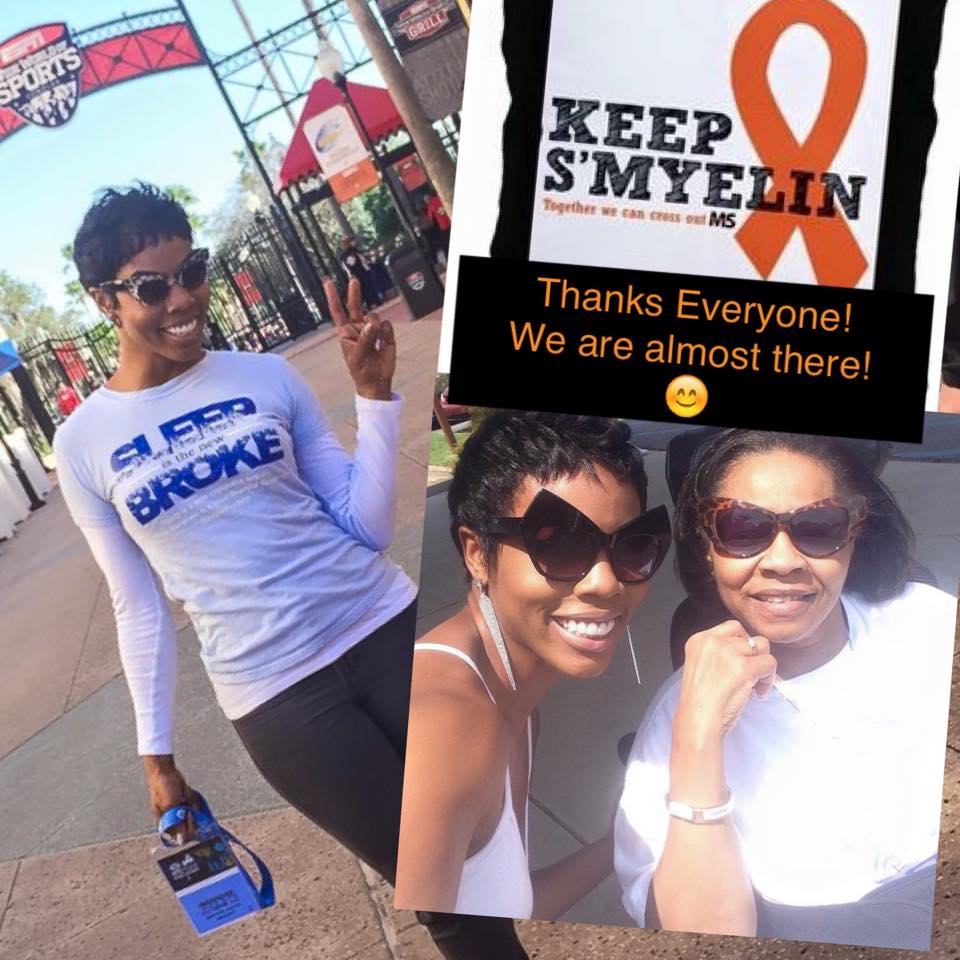
BDO: What sort of things have you learned about MS?
BE: I was in denial when it first happened because no one wants to hear that their parents or loved one is sick. So, I was like, “Is it really that bad?” and when she would forget things or she couldn’t move as quickly, I was like, “OK, she’s just being dramatic” because my mother is a little bit dramatic, but so am I [laughs]. But when I was doing research, I was like, “This is horrible.” As an active person too – it’s like telling a football player he can’t run anymore. It feels like you’re losing all your power. I’ve learned a lot of patience because it’s hard – you deal with losing mobility, losing your memory and so, it’s a lot. With MS, it’s all about the diet and when you have a parent that’s kind of set in their ways, it’s almost better to catch it when they’re younger. When you’re older, it’s hard to tell them, “You can’t have that cheese.” And they’re like, “No, I like cheese. And this is what I’ve been doing my whole life.” Just trying to cope and be patient, and it’s like a role reversal because I feel like my brother and I are becoming the parents. And we have to tell our mom as much as we can, “You can’t do this. You can’t eat that,” so that’s probably the hardest thing.
BDO: For people who aren’t as familiar with the disease, what do you want them to know about MS?
BE: It’s impacts people differently. Some people have MS and they’re in pain. And thank God, my mother doesn’t have any pain, but her livelihood was working out. As much as I hit the gym, she hit it twice as hard as I do when she was younger. I just want people to be aware and conscious that it’s out there because with the other diseases, it seems like people talk about them more – we hear about Alzheimer’s, ALS and Diabetes all the time, but people aren’t really talking about MS so people don’t really know what it is and it’s really heartbreaking. MS is very hard to diagnose. A lot of people don’t find out they have MS until it’s so far gone. So, if you feel a tingling in your leg or if you feel anything that’s not right, you need to get to a doctor.
For more on Hip Hop In Heels, visit www.HipHopInHeels.com and follow @HipHopInHeels @DancingBrandee on Instagram. Check out Brandee and her choreography in Ledisi's "I Blame You" video below:





